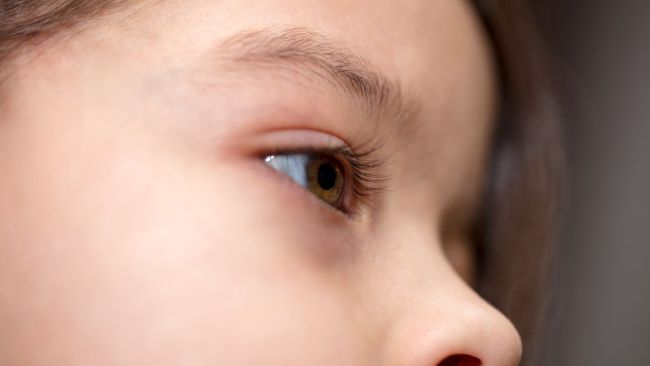Dark circles under your child’s eyes? There could be a logical explanation
As parents, we do a lot of ‘looking’ at our kids. There’s the loving gaze, the look of bewilderment, or the stare of frustration.
So it’s not at all surprising parents are quick to notice dark rings when they pop up under kids’ eyes, which makes for a very common visit to see me – the family doctor.
Firstly, let’s clear the air about one thing: those dark rings are not just a sign of a bad night’s sleep. Sure, if your kids aren’t getting enough shut-eye they might be a little more noticeable, but there’s usually more to the story.
What are the dark circles?
Dark circles are seen on kids of all backgrounds.
The dark circles are usually associated with a little more blood flow in the veins under the skin beneath the eyes. They’re more noticeable in kids because the darker blood in the veins stands out beneath their supple translucent skin.
The colour of the rings doesn’t mean anything in particular – browns, purples, or blues – it’s more a reflection of skin tone and how deep the vessels are running.
Sometimes the darker colour may relate to skin pigmentation or freckles.
Sorry parents – but you’re likely at fault
It has been widely found that genetics play a major role in the development of these dark rings. So if you suffer from ‘raccoon eyes’ then there’s a really good chance your kids will too. However, researchers haven’t earmarked the culprit genes yet.
Genetics will also link to thinner skin, freckles, and more prominent vessels in the area – which may lead to the presence of darker rings.
Hay fever and the ‘allergic shiner’
Kids who suffer hay fever often have dark rings under their eyes – commonly called ‘allergic shiners’.
In response to allergens entering the upper airways, chemicals like histamine are released, leading to mucous production and swelling of blood vessels. This general congestion around the nose causes the blood vessels across the face to swell, contributing to the dark rings forming.
If hay fever is the main culprit for your child’s raccoon eyes – we’d also expect some classic itchy runny eyes, plus an itchy runny nose with sneezing.
It can also happen after colds and flu when the general congestion hangs around, or if your kids have enlarged adenoids – which may come with mouth breathing or snoring at night.
Sunken or puffy eyes
Anything that causes your kid’s eyes to look ‘sunken’ or ‘puffy’ may create the illusion of dark rings.
Dehydration sucks the moisture out of the delicate tissues beneath the eyes causing them to appear ‘sunken’ and dark.
Allergies, injuries, or possibly poor sleep, can cause puffiness around the eyes which may cast a shadow and hence a dark ring.
Rubbing vigorously around the eyes will also lead to puffiness. Kids rub their eyes for all sorts of reasons – especially when they’re tired – which is probably why sleep gets such a bad rap.
Sun exposure and pool play
Lots of time in the sun leads to ‘tanning’ which may make rings more prominent.
Also be mindful of kids playing in pools. There’s no doubt my youngest son ends a summer weekend with cracking dark rings after hours in the pool wearing goggles. Tight goggles worn for too long can make little blood vessels pop and bruise delicate skin under the eyes.
Start your day with all you need to know
Morning Report delivers the latest news, videos, photos and more.
Thanks for signing up!
Nutrient deficiencies
This is a tough one for us doctors. Sure, numerous illnesses and nutrient deficiencies – low iron or vitamin B12 for example – might play a role, but it’s not often a specific link, and therefore blood tests are often not necessary.
If your child has a very limited diet, or is unwell with other symptoms and issues, then you’ll need a close check-up with your general practitioner and consider whether blood tests will be useful.
The bottom line is that dark rings are super common for kids and are rarely a cause of concern.
Ensure kids eat a balanced diet and take that drink bottle to school every day to stay well hydrated.
Making sure kids get a good night’s sleep is important, but staying on top of any hay fever or allergies is more likely to be beneficial.
Keep their bedroom well aired, ensure dust and mold are cleaned regularly, and use saline nose sprays to clear nasal congestion at night. And chat to your doctor about the need for antihistamines or other nasal sprays to curb the effects of hay fever.















